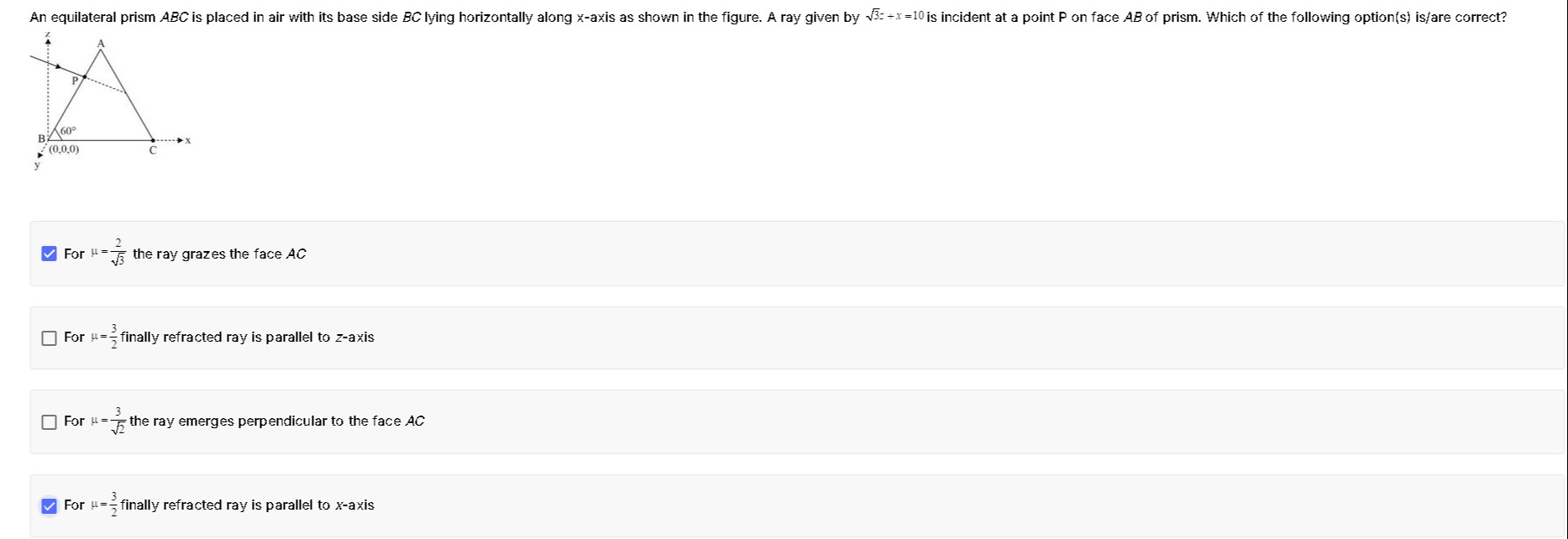Question
Question: An equilateral prism $ABC$ is placed in air with its base side $BC$ lying horizontally along $x$-axi...
An equilateral prism ABC is placed in air with its base side BC lying horizontally along x-axis as shown in the figure. A ray given by 3z+x=10 is incident at a point P on face AB of prism. Which of the following option(s) is/are correct?

For μ=32 the ray grazes the face AC
For μ=23 finally refracted ray is parallel to z-axis
For μ=23 the ray emerges perpendicular to the face AC
For μ=23 finally refracted ray is parallel to x-axis
For μ=32 the ray grazes the face AC and For μ=23 the finally refracted ray is parallel to the x-axis
Solution
The prism has an equilateral triangular cross‐section with base BC along the x‑axis and with ∠ABC = 60°. We locate B at the origin, C = (L, 0, 0) and A = (L/2, (√3/2)L, 0). The given ray in air has equation
3z+x=10.Its plane of propagation is the xz–plane.
- When the ray is incident on face AB and “grazes” the face AC at a later point in the prism, the incidence at face AC is exactly at the critical angle. A geometric–optical analysis yields the condition
- With a different value of μ, when μ=23 the ray, after being refracted at both surfaces, emerges parallel to the x–axis.
